Estonian food bears the influences of the various neighbors and occupiers of this pocket-sized Baltic state. You’ll find elements of Russian, Finnish, Latvian, Swedish, and even German dishes as you explore, as well as dishes that are uniquely Estonian.
Estonians favor locally sourced, seasonal ingredients, and the way they eat reflects fresh and available produce. The bitter winter is a time for comfort food: heavy, meaty dishes, and potatoes. The long, sunlit summers are when Estonians feast on lighter fare: berries, apples, rhubarbs, and wild mushrooms, as well as fish from the Baltic, which borders two sides of this roughly square country.
Before every household had a fridge and a freezer, food was preserved by pickling, fermenting, and smoking. Berries were turned into jams and jellies, traditions which continue today. But there’s more to Estonian food than rustic cuisine; wander around Tallinn and you’ll find Michelin-recommended restaurants and mouth-watering patisserie displays as well as traditional pubs and taverns.
Rye Bread, or Rukkileib
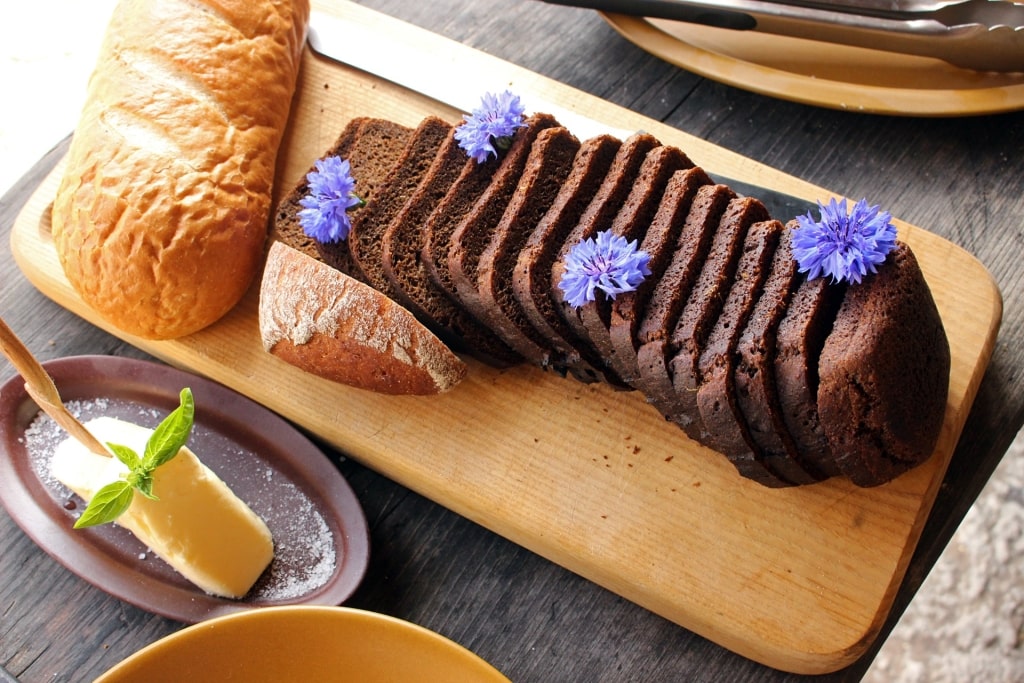
Rukkileib
Many Estonians make their own bread using dark rye flour. This black bread, which is fairly dense and strongly flavored, has a thin and crispy crust. It is served with most Estonian dishes, or as open sandwiches. It’s also delicious when slathered with creamy, salty butter and topped with herby Estonian cheese.
As there’s such a trend for home baking now, Estonians experiment with their rye bread, adding anything from seeds to chopped bacon, or berries and raisins for a sweeter version.
Read: European Food Guide
Verivorst
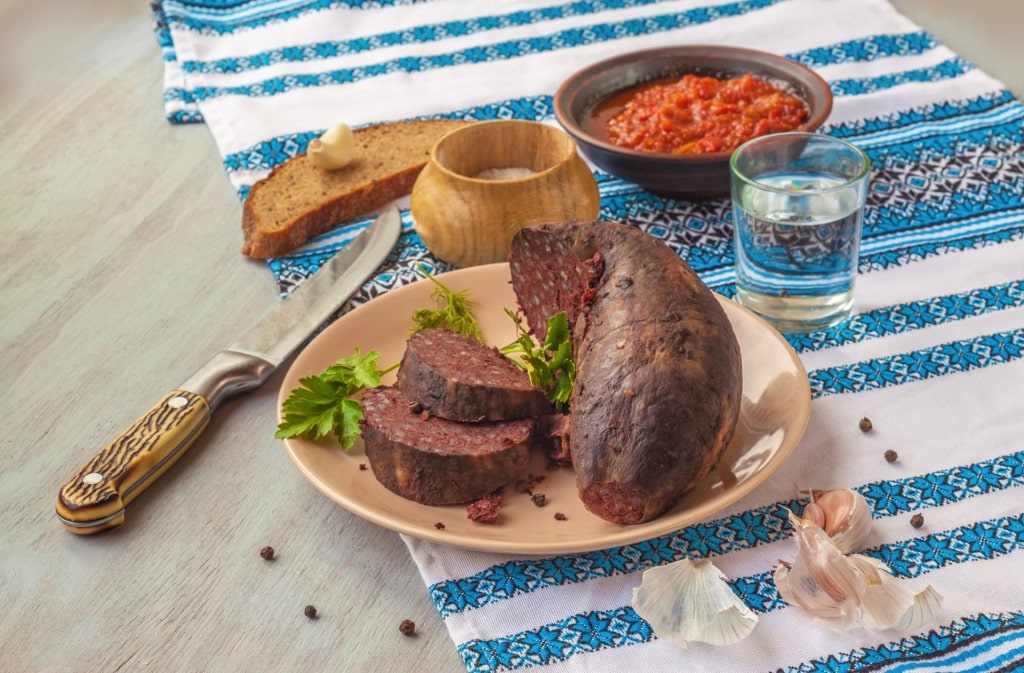
Verivorst
Verivorst, or blood sausage, is a dark sausage that originated in Sweden and Latvia in the 19th century. It’s a Christmas and winter treat, but if you visit a traditional Estonian restaurant, it might be on the menu in summer. It’s considered Estonia’s national dish.
The sausage is made of pork, pig’s blood, barley, and flavorings including marjoram and allspice. It’s typically served with roast pork and potatoes, accompanied by a large dollop of sour cream, sauerkraut, pumpkin, and cranberry jam.
You’ll see a lot of cranberries in Estonian cuisine; once, they were one of the only sources of Vitamin C in the harsh Estonian winters and are therefore an important nutrient.
Kaneelirull
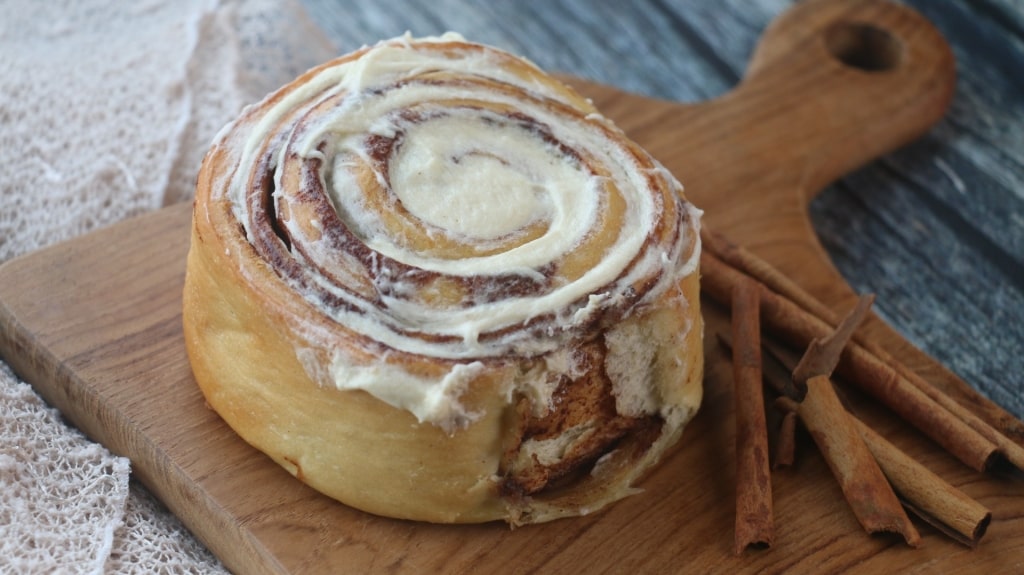
Kaneelirull
The Swedish influence on Estonian food is apparent in these delicious rolls, which locals enjoy with their morning coffee. This carb-rich treat is made with a yeasty dough and flavored with sugar and cinnamon.
If you have a sweet tooth, also look out for semla, a bread roll spiced with cardamom and filled with almond paste. Whipped cream is dolloped on the top and sprinkled with confectioner’s sugar. Calories didn’t matter in the old days, when Estonians typically worked long days in the fields, and these decadent treats have transcended the decades.
Mulgipuder
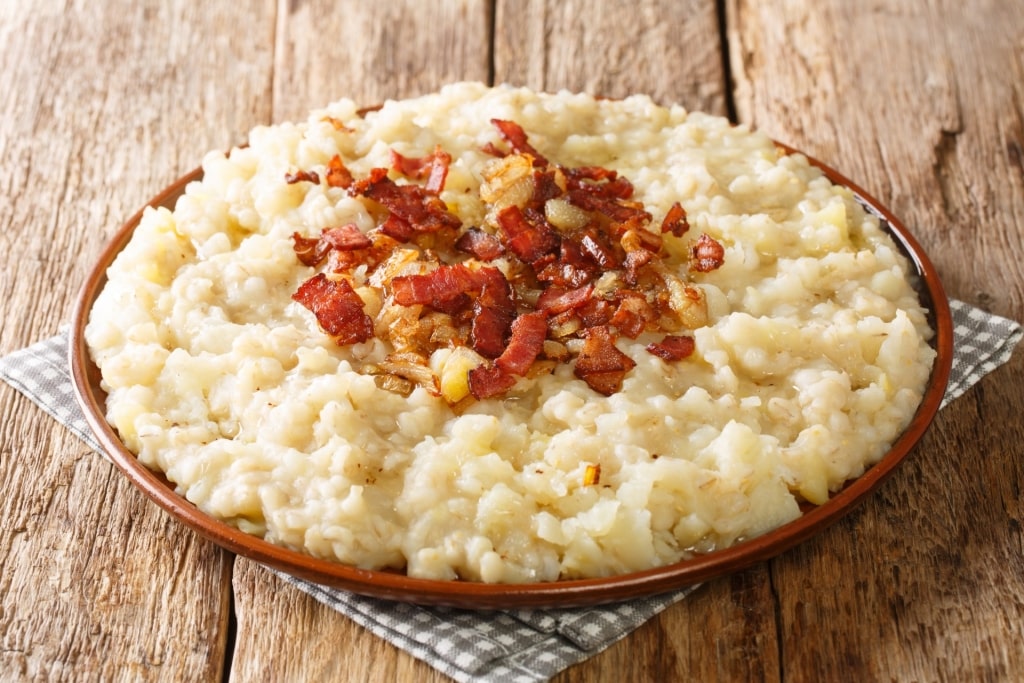
Mulgipuder
To Estonians, mulgipuder is the ultimate comfort food. It’s a dense porridge made with barley, mashed potatoes, and meat, with milk adding extra creaminess. Sauteed onions add flavor, while bacon contributes a salty tang. Mulgipuder may be served with rye bread and sour cream, or with a slice of aspic.
You may come across a different porridge, kruubipuder, made from pearl barley, butter, and water. This one is often served with marinated eel.
Marzipan
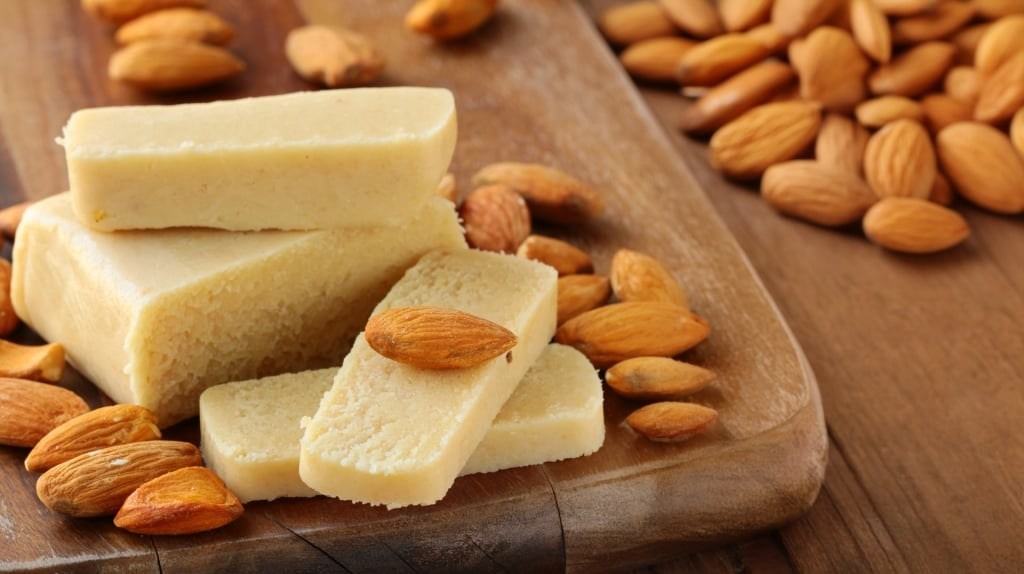
Marzipan
Marzipan has been made in Estonia since the Middle Ages, and you’ll see it in a lot of lavish displays of marzipan candy in the confectionary shops in Tallinn.
If you want to know more, drop into the historic Café Maiasmokk, which has been trading since 1864. There’s a marzipan room here where you can learn about the history of the café and the intricate art of marzipan figure painting. Needless to say, there are plenty of opportunities to sample the café’s wares, too.
Seapraad Ja Hautatud Hapukapsad
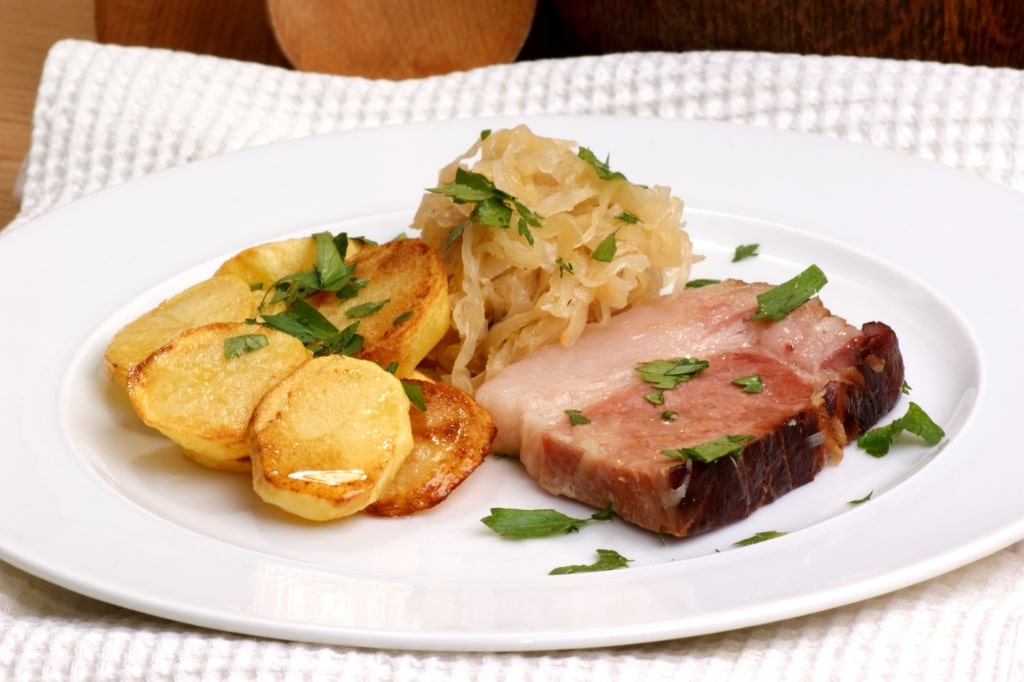
Seapraad ja hautatud hapukapsad
You may not be able to pronounce it, but meat lovers won’t want to miss seapraad ja hautatud hapukapsad, Estonia’s take on traditional roast pork with sauerkraut.
Like much Estonian cuisine, this is a relatively simple dish. The pork is slow-roasted until it’s browned and crispy on the outside, and served with sauerkraut, or hapukapsas. Again, sauerkraut was an important nutrient in days gone by, fermented for weeks, which meant it could be enjoyed during the cold winters. Today, of course, it’s fashionable as a good source of gut-friendly bacteria. Either way, the tangy sourness of the hapukapsas balances the rich roast pork.
Estonian Cheese
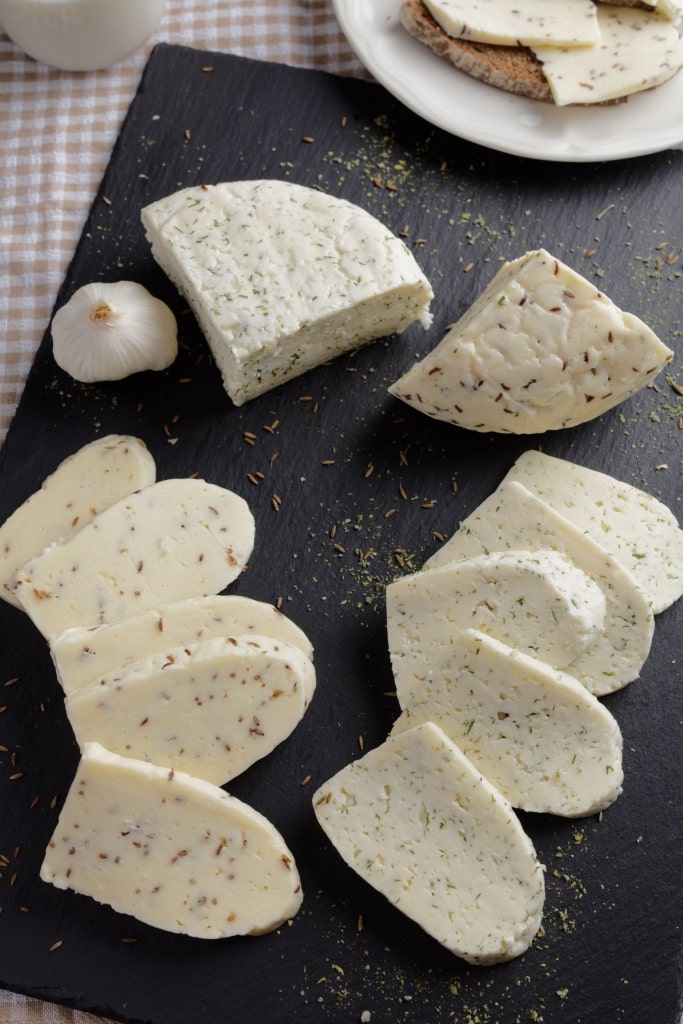
Estonian cheese
Dairy products form an important part of Estonian cuisine; away from the towns, you’ll find lush pastures where cows graze. Estonia is, in fact, one of the highest producers of cheese per capita in the world.
The most typical cheese you’ll come across in Estonia is similar to the Dutch Gouda and Edam. It’s semi-hard and smooth, cylinder-shaped, and has a rich flavor. Try it on bread or melted into a soup.
You’ll also come across sõir, a soft cheese dish made with milk, cottage cheese or quark, butter, and eggs, flavored with caraway seeds. It’s served on rye bread or crackers, or as a main course with boiled potatoes. Estonians traditionally eat sõir during the midsummer festivities.
Küpsetatud Õunad
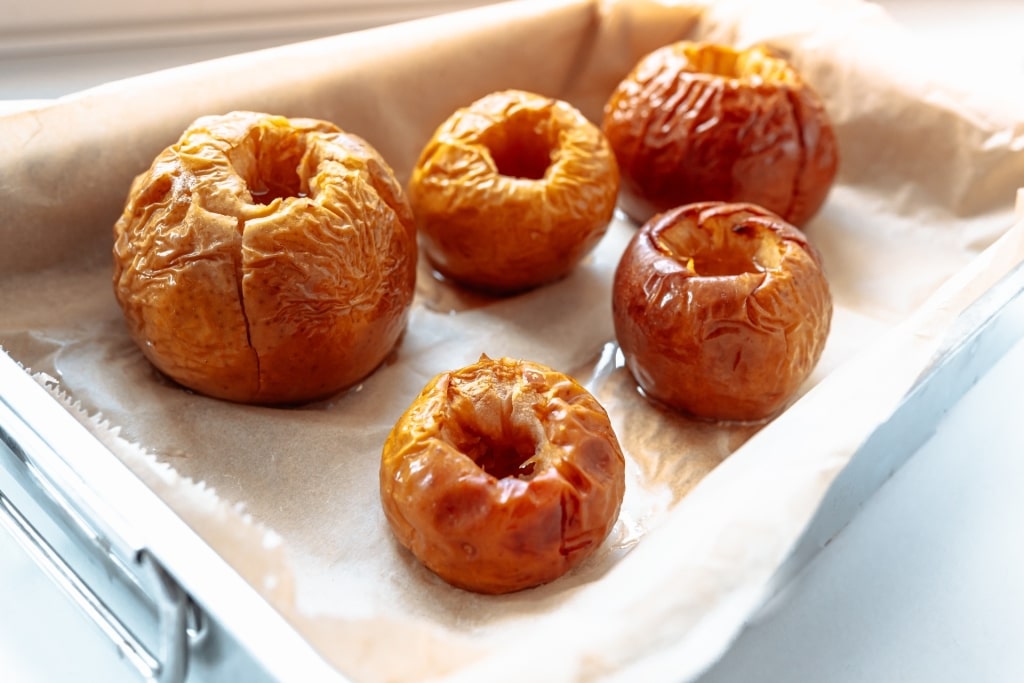
Küpsetatud Õunad
Estonians love apples and many people in rural areas have a few trees in their backyard. Fall is the season for newly picked apples, but the fruit is available year-round. You’ll see apples everywhere in the form of juice, cakes, and jams.
This simple baked apple dish is a popular dessert. Large cooking apples are cored, the middle stuffed with raisins, nuts, honey, and cinnamon. The apples are baked in the oven until they’re steaming hot and soft inside, and are delicious with a dollop of cream or ice cream.
Kohuke
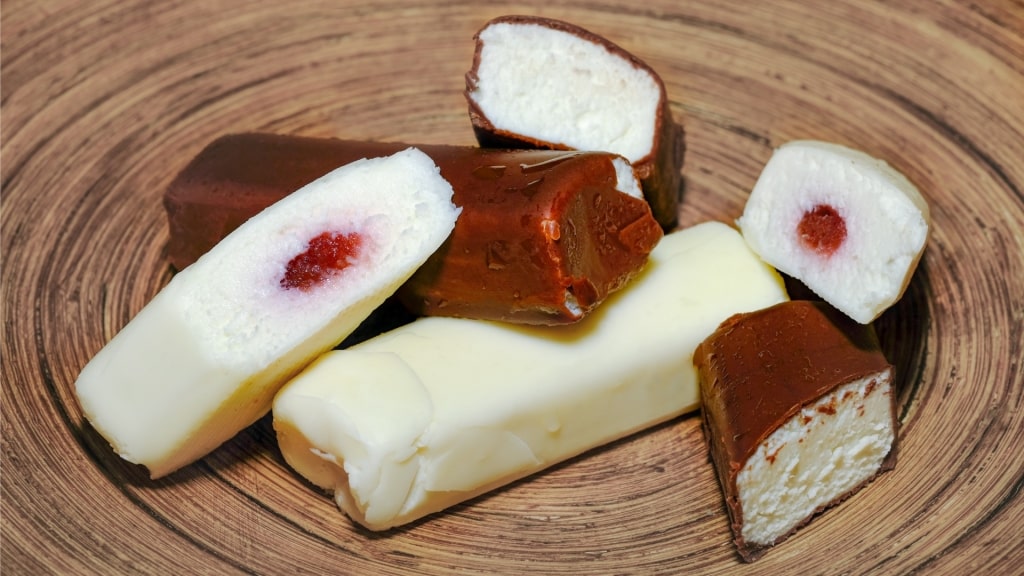
Kohuke
These tasty bars are made from sweet, pressed curd and glazed with chocolate, making them a nutritious, protein-rich snack. You’ll see them on sale in supermarkets at the chilled counter.
As well as the classic chocolate version, kohuke comes in different flavors, from strawberry to caramel, lemon, and coconut. They’re often scattered with poppy seeds or coconut flakes.
Kohuke actually originated in Moscow, although Estonia has adopted it as its own national snack. If you’re traveling with hungry kids or teens who want something to nibble on between meals, just drop into a grocery store and pick up some kohuke.
Sült
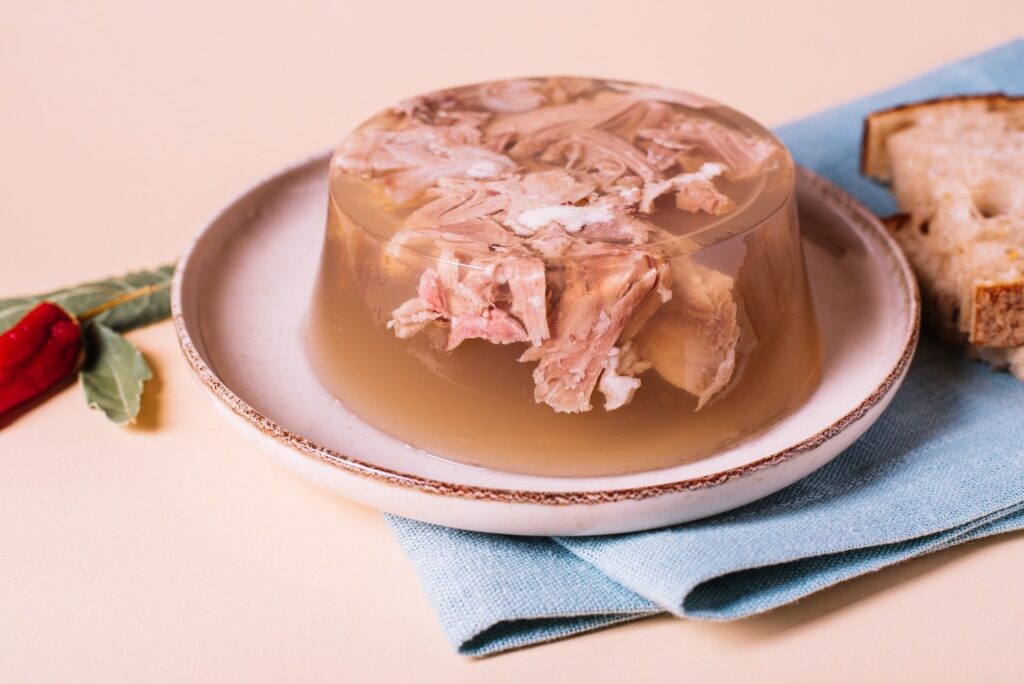
Sült
Sült, or aspic, is a meat jelly made from gelatine and stock, encasing other ingredients in a decorative mold. You might come across it containing pork, beef, hard-boiled eggs, and herbs.
Aspic was traditionally known as a poor person’s food, the jelly used to encase the less appealing leftover pieces of pork, not least the trotters and rinds. Its long cooking time doubled up as a chance to heat the kitchen in winter.
Today, while still an acquired taste, it’s considered a delicacy and is served at weddings and on special occasions, accompanied by cottage cheese and boiled potatoes.
Rosolje
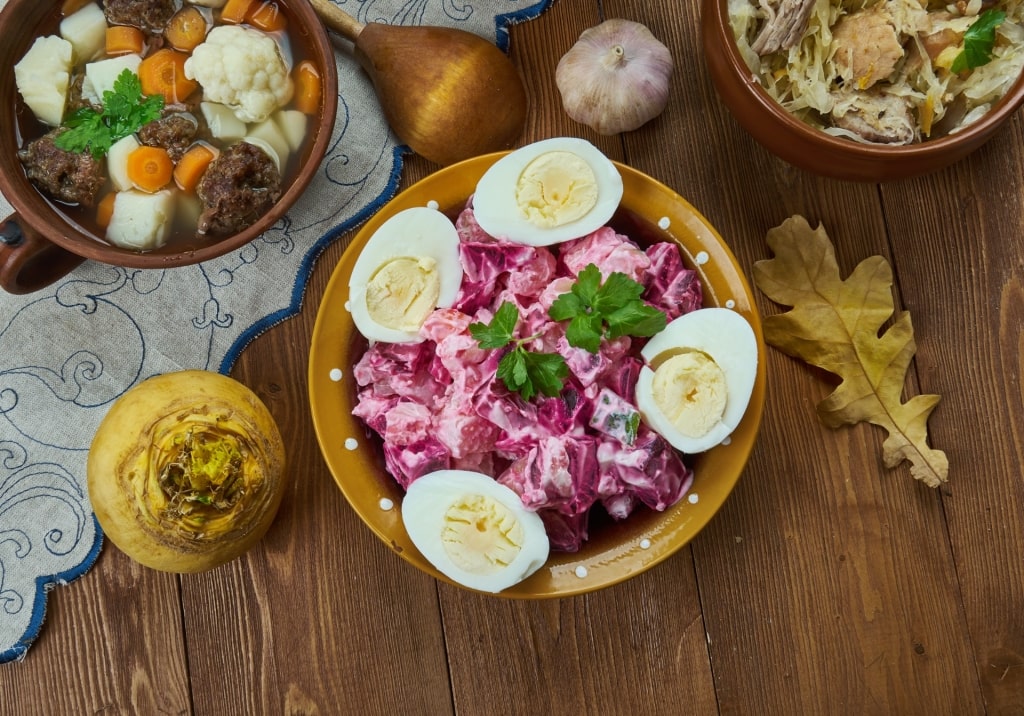
Rosolje
Any table is livened up by the presence of rosolje, a bright pink salad based on beetroot, which provides the color.
Other ingredients include boiled potatoes, hard-boiled eggs, and herring. The whole ensemble, which is a popular Christmas Eve dish, is served with black bread.
Kiluvõileib
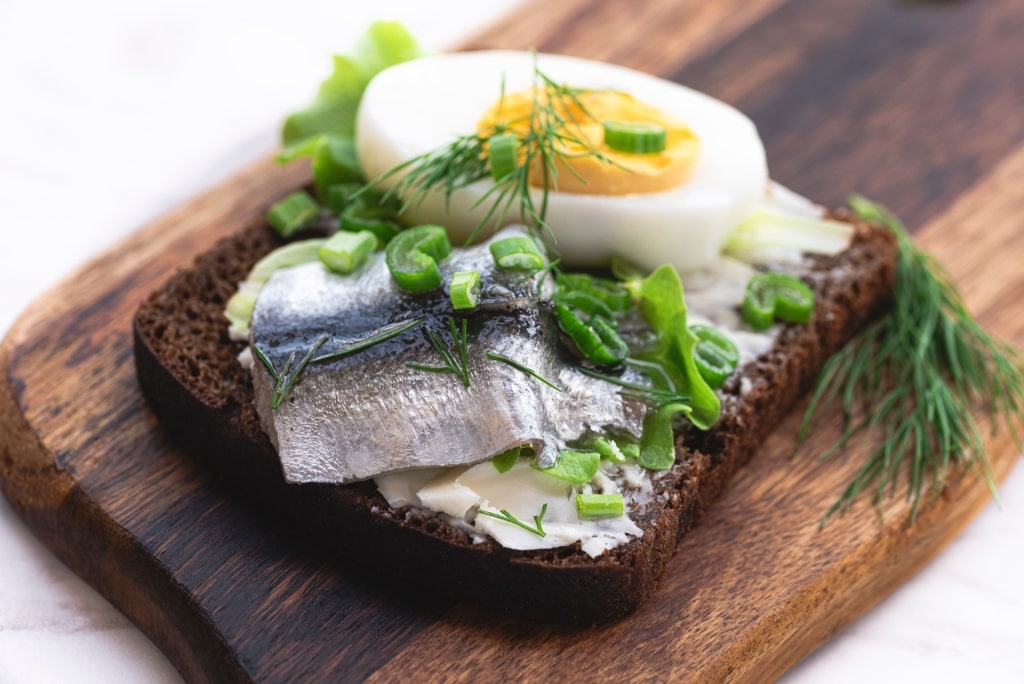
Kiluvõileib
This popular sprat sandwich comprises black bread slathered with butter or egg butter—butter mixed with chopped hard-boiled eggs, called munavõi—with all kinds of toppings. These might include the ubiquitous sliced onions, greens, more hard-boiled egg, chopped dill and parsley, and the crowning glory, fileted sprats from the Baltic.
Sprats, if you haven’t come across them before, are small, oily fish from the herring family, not unlike sardines. They’re usually sold canned, or are smoked or pickled, although you can eat them fresh, too.
Pirukas
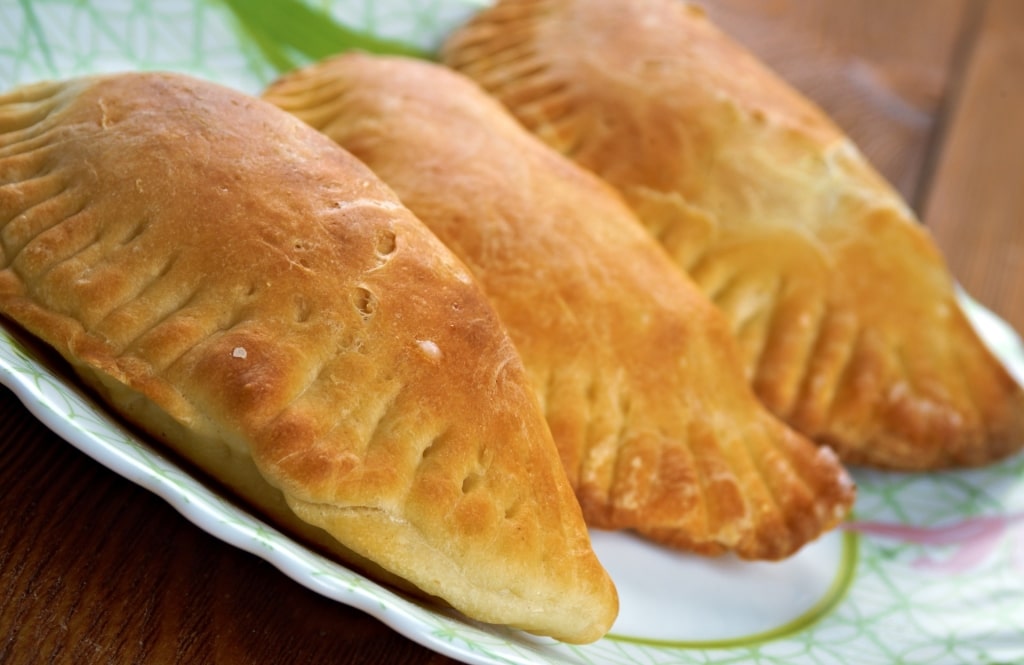
Pirukas
Pirukas are Estonia’s answer to empanadas: small pastry parcels with different fillings eaten as a snack. The pastry could be puff pastry or regular dough, and the pirukas are either baked, which is more typical, or fried.
The original pirukas were filled with cabbage and salted fish, but the snack has evolved to be essentially anything you like. Typical larger pirukas are stuffed with cabbage, meat, and carrots, but you’ll see others containing cheese and ham, while a vegetarian version includes carrots, turnips, and onions.
There’s a sweet option, too, which is typically filled with apples and rhubarb and spiced with cinnamon.
Vastlakukkel
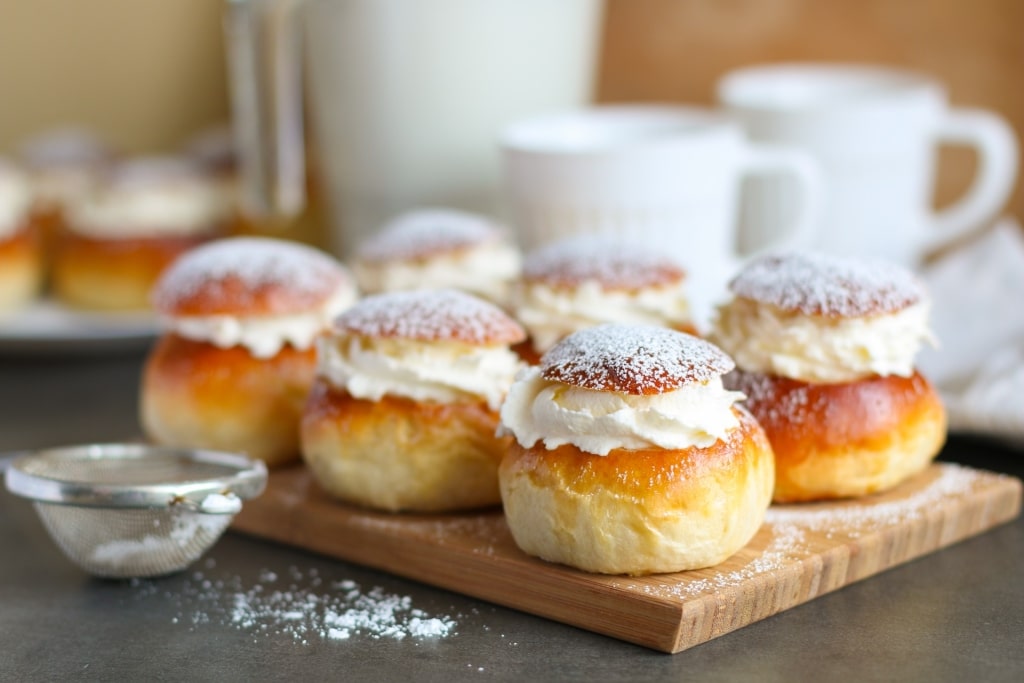
Vastlakukkel
Delicious vastlakukkel are Estonia’s pre-lenten buns, traditionally eaten on Shrove Tuesday, before the 40 days of fasting that precedes Easter. They’re typically a brioche bun filled with jam or marzipan and topped with whipped cream. Little wonder that they’re so popular.
These cream buns stem from the days when households needed to use up fresh ingredients before the fasting period began. They were introduced to Estonia by Germany in the Middle Ages, although they took a different form then and were served hot.
Berries
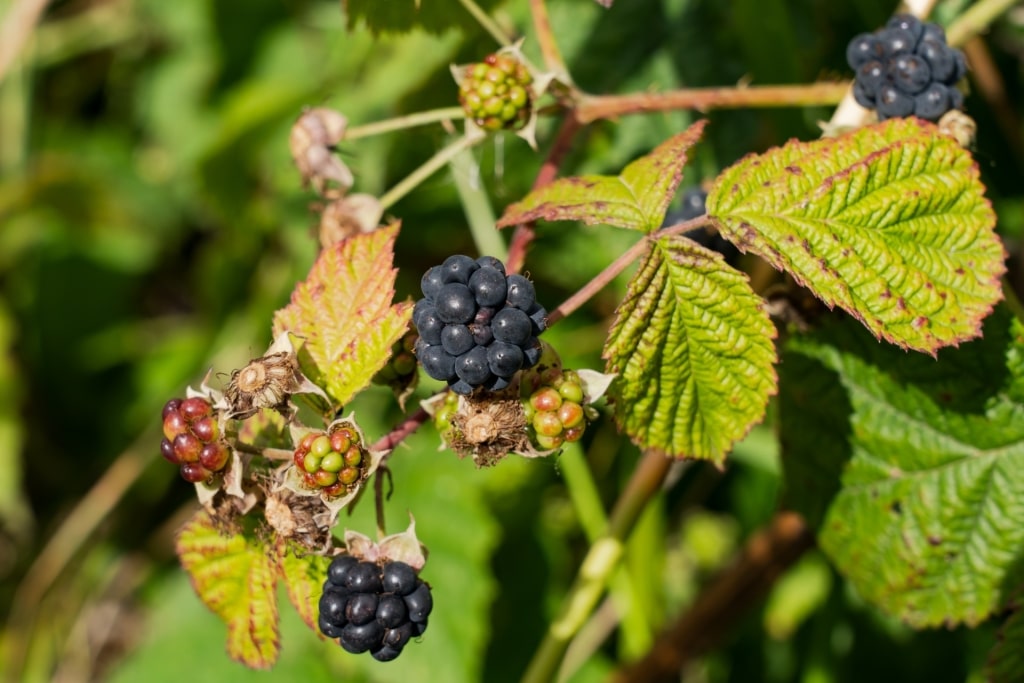
Berries
Berries are a staple of Estonian cuisine, and you’ll see them on the menu all summer long. Heading out on a berry-picking expedition is a popular activity; wild berries are, after all, free, and packed with nutrients and vitamins.
The variety is astonishing. As well as strawberries, you’ll find raspberries, redcurrants and blackcurrants, gooseberries, blackberries, bilberries, cranberries, and at the end of the summer, lingonberries.
Berries are served with honey and milk, or in tarts, ice creams, and jellies. Every self-respecting household has jars of homemade jam using the products of the summer’s foraging. Estonian chefs are getting increasingly creative with berries, too, using them to accompany meat in high-end restaurants.
Wild Mushrooms
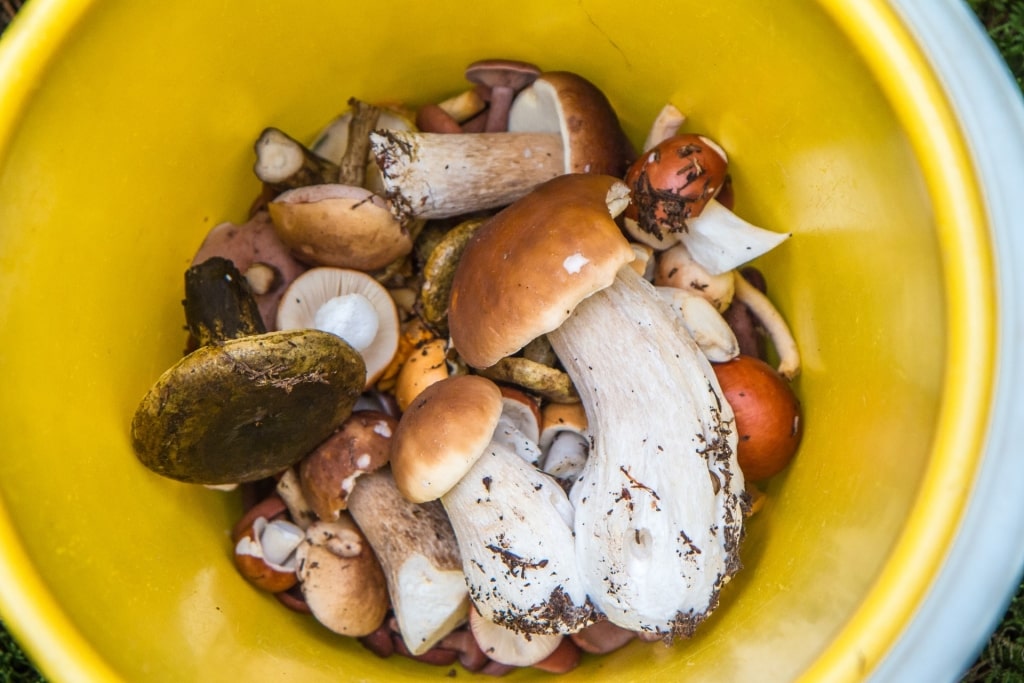
Wild mushrooms
July to October is mushroom season in Estonia, and locals love nothing more than a foraging trip into the forest. As a visitor, you can arrange a tour with an expert who will help you identify the different species. Going foraging alone isn’t recommended unless you really know what you’re doing as there are some poisonous species in Estonia, too.
Several species thrive in Estonia’s forest but the most prized is yellow chanterelles, which are typically cooked in a creamy sauce and served over pasta, used to fill pancakes, or as an accompaniment to pork. Out of season, you’ll find marinated mushrooms accompanying meat dishes.
Kama
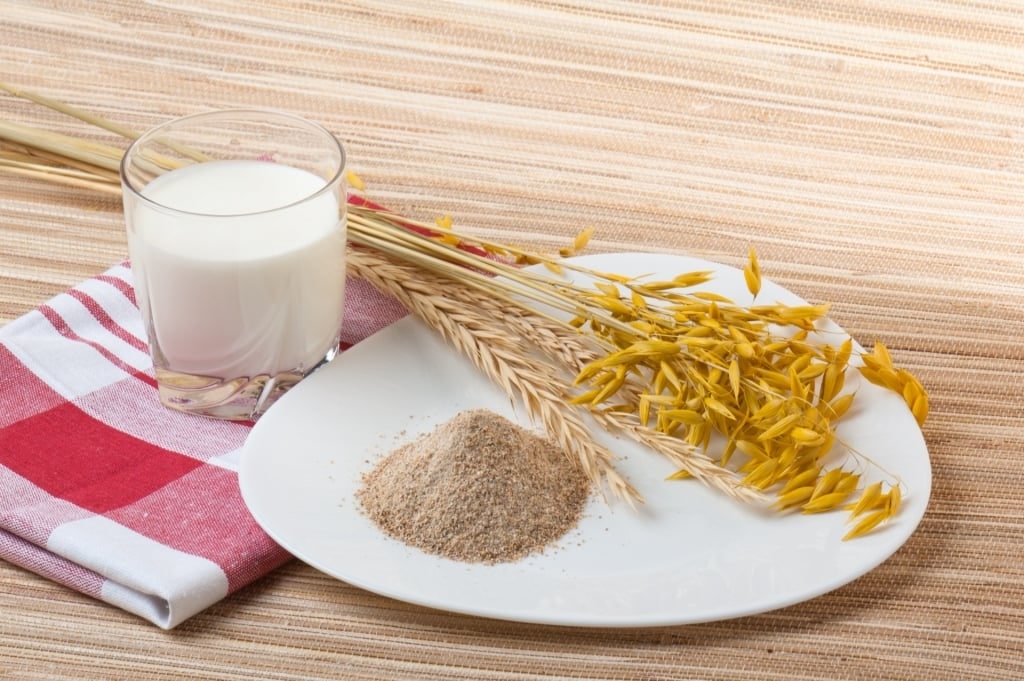
Kama
Kama is Estonia’s answer to muesli. It’s a combination of different flours, including barley, oat, rye,and yellow peas, finely milled into a rough powder. Its origins are similar to those of many Estonian foods; a case of creating a high-energy snack for those laboring in the fields and not wasting anything.
Kama would originally be rolled into butter, but nowadays, it’s eaten with quark, a soft, yogurt-like cheese, or sour milk, sweetened with honey and fresh strawberries and blueberries when they’re in season. If you’re out and about early in the capital city of Tallinn and stop somewhere for breakfast, you’ll most likely see kama on the menu.
Eesti Kartulisalat
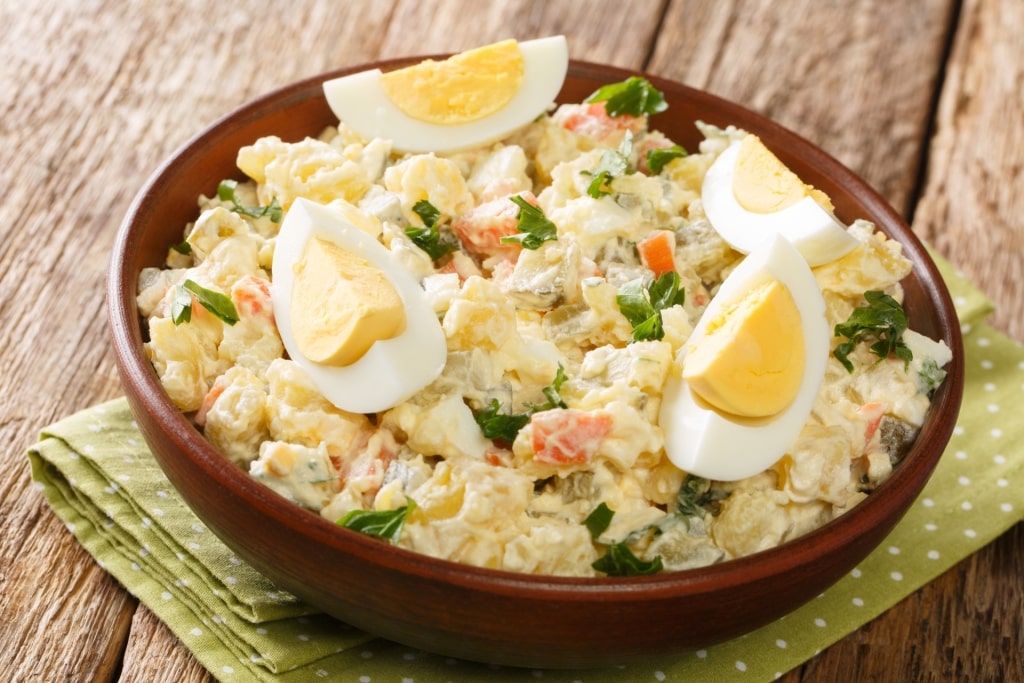
Eesti kartulisalat
This much-embellished potato salad is a popular party dish, often served on a big platter at celebrations. As well as potatoes, the salad includes produce that most Estonians grow in their backyards, including carrots, cucumbers, and peas.
The protein element comes from hard-boiled eggs and sausages, while the whole ensemble is tossed with a dressing made from sour milk and mayonnaise.
Estonian Beer
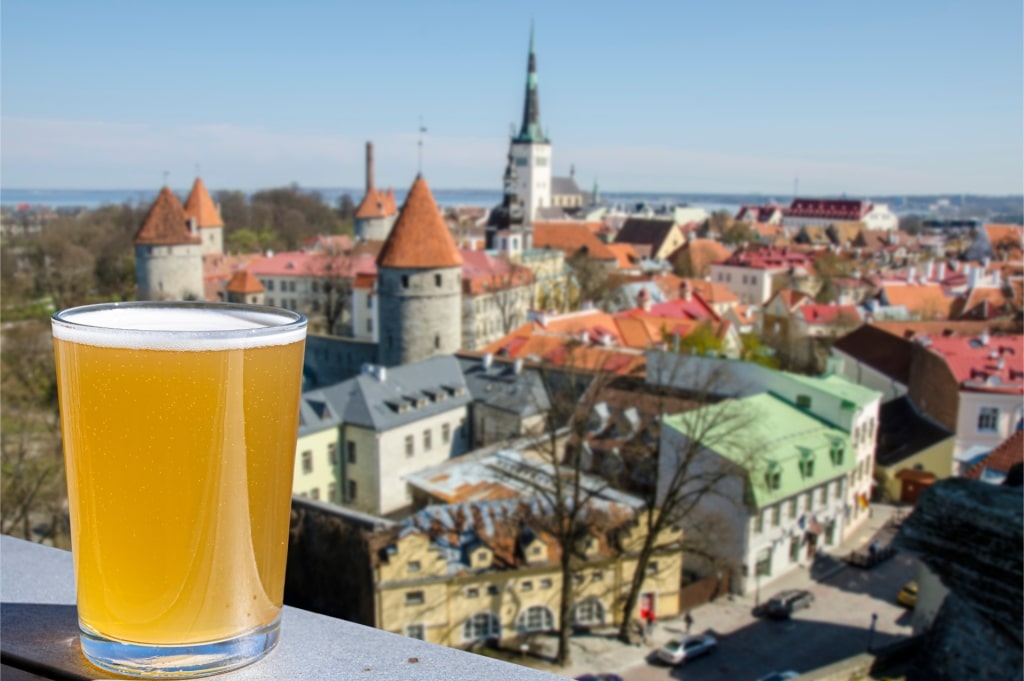
Estonian beer
Estonians love beer, or õlu. Wander around Tallinn on a hot summer’s day and you’ll find locals drinking in every beer garden and sunny square.
While craft beers and microbreweries are fashionable in Estonia, beer has been brewed here for thousands of years, right back to the days when barley, rye, and wheat were first grown. Today, Baltic Porter is one local variety to try, a richly flavored, dark, strong lager that includes malted barley. Saku Originaal is an American-style lager, while the pale golden Viru is more European in flavor.
Vana Tallinn
Every country has its signature liqueur, and in Estonia, it’s the sweet Vana Tallinn, a rum-based drink flavored with a secret blend of vanilla, citrus oils, and spices. Check out the distinctive bottle, which is fashioned after the ancient ramparts that surround Old Town Tallinn.
Vana Tallinn is pretty sweet and is usually served in shot glasses, as part of a cocktail, or in coffee. You could try it in a spritz on a hot summer’s day, with ice, lemon juice, and sparkling water. Or opt for the potent Winter Spice on a cool day, the original Vana Tallinn pepped up with nutmeg, anise, and cardamom.

Tallinn
Are you tempted to discover more about the cuisine of the Baltic region? Browse Celebrity’s cruises to Estonia and plan your culinary adventure.



